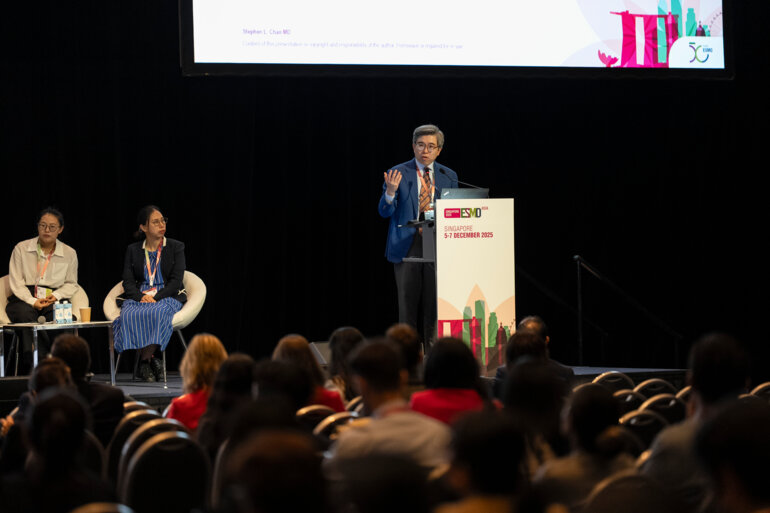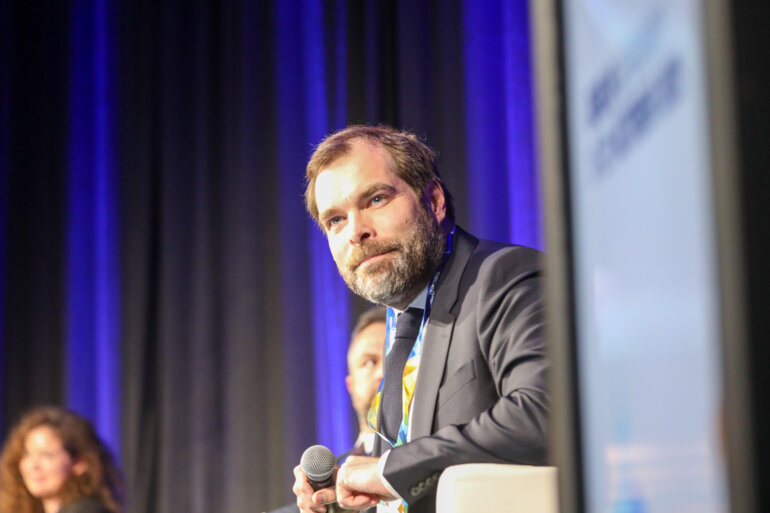ESMO is sustaining its efforts to give rare cancers a more prominent place in oncology
A new approach to rare cancers is needed to give patients better chances of benefitting from the current wave of therapeutic innovation. Today, the detection of certain genetic alterations in the tumour DNA, which can occur in various cancers regardless of their organ of origin, is increasingly a determining criterion in choosing the right course of treatment, especially for patients with metastatic disease. In spite of this, targeted therapies continue to be investigated and approved sequentially for individual tumour types following the traditional organ-based classification, thus delaying access for people with other diseases but who harbour the same actionable mutations. As highlighted in a recent paper on this issue (Nature 2024 Jan 21;626:26-29), a whole six years elapsed between the initial approval of the PARP inhibitor olaparib for BRCA1/2 mutated ovarian cancer and the extension of the drug’s indications to pancreatic cancer in 2020: precious time lost for patients with few other therapeutic options and high unmet need.
Taken together, rare cancers – those with an annual incidence of less than 6 in 100,000 – represent nearly a quarter of all new diagnoses. As the identification of a wide range of tumour molecular profiles keeps reducing the frequency of almost every cancer subtype even in the more common conventional disease categories, patient selection and recruitment for clinical trials of new targeted agents is becoming more and more complex. This is an unprecedented opportunity to bring rare cancers to the forefront of oncology research and treatment in the future.
Addressing the unmet needs will require decisive action, starting with the establishment of centralised networks at national and international level to enable faster diagnosis and access to therapies, as highlighted by Claudia Valverde in her opinion piece “Centralisation of care in rare cancers – what are the next steps?”
In the ESMO Manifesto for a Healthier Europe, we have advocated for specific measures also at EU level to secure access to innovative and cost-effective treatments for the more than 5 million European patients suffering from rare and ultra-rare cancers. These include developing a criterion-based definition of unmet medical need, as well as scientific guidelines for categorising orphan medicinal products that address a high unmet medical need, and which therefore should benefit from specific research and regulatory incentives. In the research arena, additional efforts are needed to accelerate the implementation of precision medicine for all patients with cancer. The ESMO Manifesto therefore calls for the 10th EU Framework Programme (FP10) to prioritise cancer through specific workstreams to advance both our understanding of the multidimensional causes of different diseases, including rare cancers, and the development of personalised cancer therapies.
The key here, especially for rare cancers, but not only, will be to make consistent and cost-effective use of next-generation sequencing (NGS) techniques on a larger scale. Recognising the rapid evolution of cancer genomics and drug development in recent years, ESMO has recently updated its recommendations for the use of NGS for patients with advanced cancer, first published in 2020, due to be published very soon. This has resulted in an expansion of the recommendations to encompass new disease areas, including a number of rare cancers: gastrointestinal stromal tumours, sarcoma, thyroid cancer, and cancers of unknown primary origin. ESMO now also supports NGS testing to detect tumour-agnostic alterations in cases where patients could gain access to matched therapies. Importantly, the recommendations cover not only genomic alterations classified as ESMO Scale for Clinical Actionability of molecular Targets (ESCAT) level I, for which corresponding medicines are considered ready for use in routine practice, but also ESCAT level II alterations to facilitate the identification and enrolment of patients in clinical trials.
Finally, the time has come for the community to change its mindset surrounding rare cancers and stop seeing them as separate from mainstream research in oncology. The development of targeted agents and conduct of clinical trials using robust biomarkers has already led to new medicines receiving accelerated approval on the basis of large phase II trials on various occasions, perhaps most notably in the field of lung cancer. Even for rare alterations and disease types, larger trials of this kind would be possible with collaborative groups and, especially in cases where standard therapies provide little benefit, enable much-needed progress for patients who cannot afford to wait any longer.






